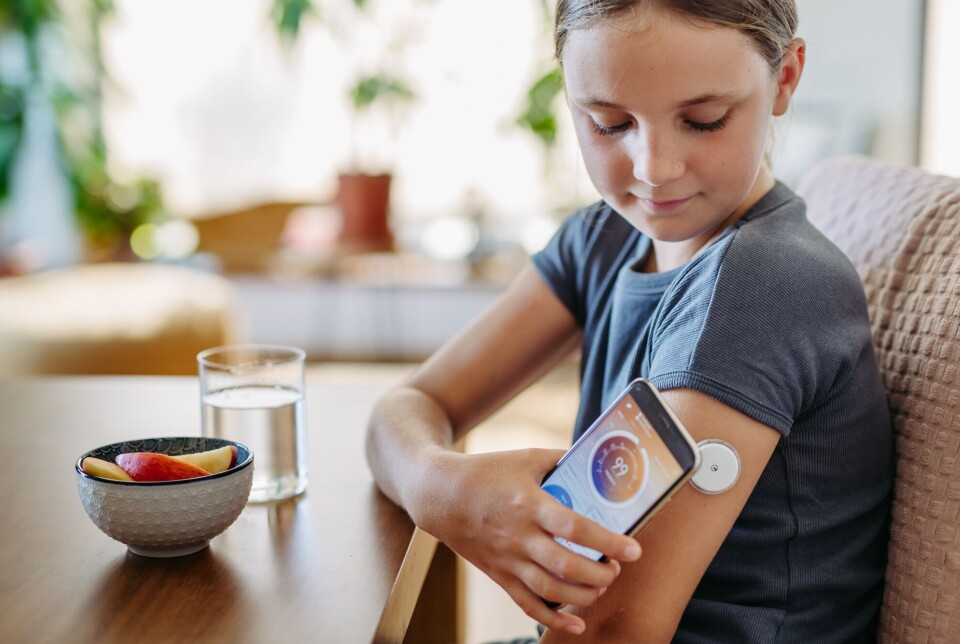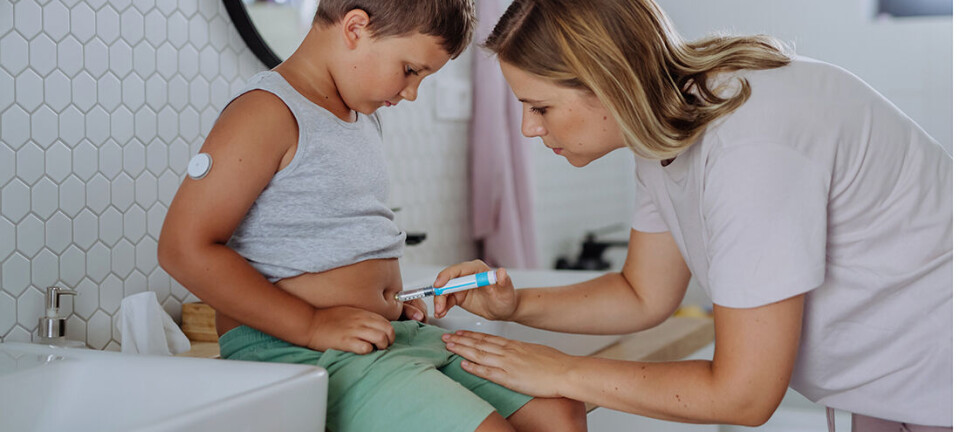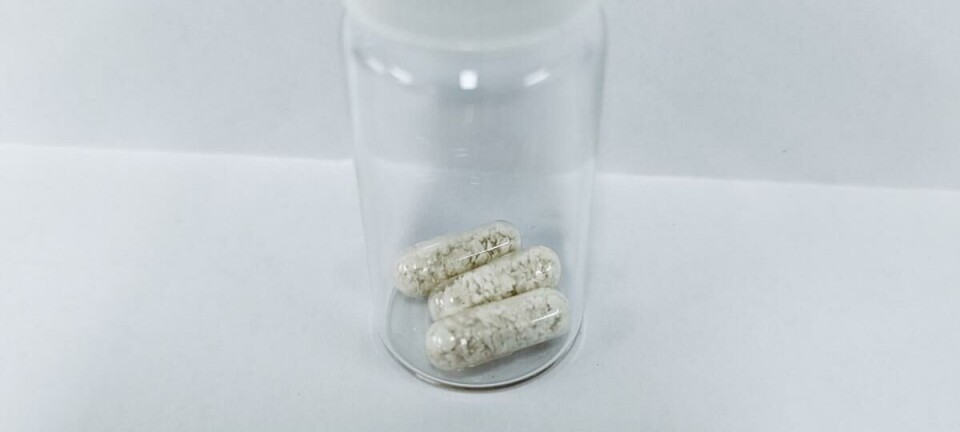
Norwegian kids with diabetes have gained better control over their blood sugar levels
"The new equipment has brought about a true revolution," a Norwegian professor says.
Every year, approximately 400 children are diagnosed with type 1 diabetes in Norway, according to this article on sciencenorway.no.
The disease causes the body to stop producing the essential hormone insulin.
There is no cure, and children and adolescents who get the disease must receive insulin for the rest of their lives.
A new study now shows that blood sugar levels in Norwegian children and adolescents with type 1 diabetes have significantly decreased over the past ten years.
“This is very good. It’s what we want. Lower long-term blood sugar seems to reduce the risk of late complications when they become adults,” Heiko Bratke told the Norwegian Broadcasting Corporation NRK, who first reported on the study.
Bratke is a researcher and chief physician at Haukeland University Hospital. He is one of the researchers behind the study, which was recently published in the scientific journal Diabetes Care.
A thorough study
According to Bratke, the decrease in blood sugar is due to several factors: New technology such as insulin pumps and glucose sensors, carbohydrate counting to better match insulin doses to food, and a systematic treatment approach provided at Norwegian hospitals.
“This is a very good study,” says Knut Dahl-Jørgensen, professor at the University of Oslo.
He has not participated in the study but knows it well. Dahl-Jørgensen was involved in starting the systematic treatment approach, which is one of the measures researchers believe contributes to the success of Norwegian children with diabetes.
He is not surprised by the results.
“Paediatric departments in hospitals around Norway have shown a willingness to adopt new treatment methods,” he tells sciencenorway.no.
“By achieving such good treatment, they manage to prevent long-term complications.”
Preventing blindness and kidney damage
Children and adolescents with diabetes have a higher risk of developing certain complications as they grow older. These are called long-term complications.
High blood sugar over time can affect the eyes, leading to impaired vision and, in the worst case, blindness. It can also lead to kidney failure, thereby increasing the risk of a kidney transplant.
Diabetes can also affect the nerves in the body, resulting in reduced sensitivity in the legs, which in the worst case can lead to amputation. It can also increase the risk of early development of heart diseases and stroke, according to diabetes.org.uk.
“Effective treatment is incredibly important for the future of these children,” says Dahl-Jørgensen.
He points out that treatment is also important for society.
“Kidney transplants are very expensive,” he says. “But most importantly, a lot of suffering is prevented.”
Getting children and adolescents to manage diabetes
The biggest challenge for specialised departments is getting children to manage their diabetes themselves, according to Dahl-Jørgensen.
“Teaching children and adolescents is a very big task,” he says.

This education is essential not only for families of young children but also for the children as they take on the responsibility of managing their blood sugar.
In this regard, technology plays a crucial role.
Sensors and pumps make life easier
“Technology has improved significantly in recent years,” says Dahl-Jørgensen.
It mainly consists of two components:
Glucose sensors: These are inserted under the skin like a needle. This continuously measures blood sugar, allowing parents and children to monitor the levels via an app on their phones.
Insulin pumps: The measurements from the glucose sensors have become so accurate in recent years that they can be directly uploaded to the insulin pump. The pump receives information from the sensors about how much insulin is needed and administers it into the body.
“In the last five years, the technology has advanced to the point where children in Norway can achieve nearly normal blood sugar levels. The new equipment has brought about a true revolution,” says Dahl-Jørgensen.
Now, the main challenge is to implement all this technology. Dahl-Jørgensen believes that everyone diagnosed with type 1 diabetes should be offered this equipment.
Children and adolescents report blood sugar levels
The study is based on registry data from the so-called Norwegian Childhood Diabetes Registry. Almost all children with diabetes in Norway and their families participated, with a response rate of 98 per cent.
“It’s actually unique globally because it includes information from all hospital departments that treat diabetes and almost all patients,” Dahl-Jørgensen says.
The data is based on annual check-ups where the children underwent systematic examinations from 2013 to 2022.
Since this is an observational study, the researchers primarily identify correlations.
They found a correlation between the use of new technology and lower blood sugar levels. This means that those who used an insulin pump had lower blood sugar levels than those who did not.
However, this is not a causal relationship. The researchers cannot definitively say that the insulin pump causes lower blood sugar levels.
Nevertheless, the researchers believe there is strong evidence for this. The data show that children and adolescents with type 1 diabetes gained better control over their blood sugar from 2013 to 2022. The researchers attribute this to new technology, carbohydrate counting, and hospital treatment.
Doctors, nurses, and dietitians
The systematic annual check-ups with quality comparisons were established in 1998 and are still conducted. Dahl-Jørgensen initiated the programme in collaboration with WHO Europe.
Today, all children with diabetes receive treatment in paediatric departments in Norwegian hospitals. These departments have doctors, specialised nurses, psychologists, and dietitians.
All departments hold annual meetings where healthcare personnel discuss the best practice for the children.
———
Translated by Alette Bjordal Gjellesvik
Read the Norwegian version of this article on forskning.no
Reference:
Bratke et al. Ten Years of Improving Glycemic Control in Pediatric Diabetes Care: Data From the Norwegian Childhood Diabetes Registry, Diabetes Care, 2024.






































